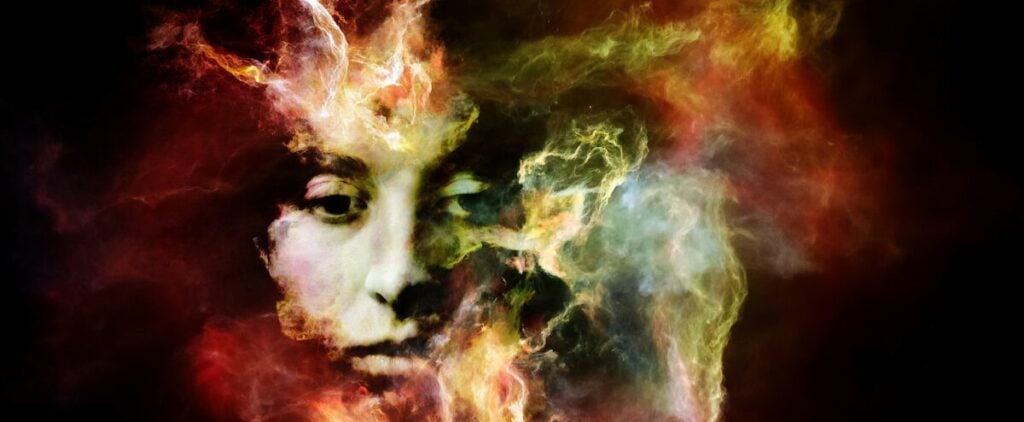Psychedelic therapy: How it works, benefits, dangers
Reviewed by Stephanie Steinman, PhD, CSAC

Psychedelic therapy, also known as psychedelic-assisted therapy, involves using psychedelic substances during the treatment process for certain mental health concerns.


Psychedelics are mind-altering substances. They can be derived from plants or made synthetically in a lab. Common plant-derived psychedelics include:
- Ayahuasca
- Magic mushrooms (psilocybin)
- DMT (N, N-Dimethyltryptamine)
Common synthetic psychedelics include:
- LSD (lysergic acid diethylamide)
- Ketamine
- PCP (phencyclidine), also known as angel dust
- Ecstasy, also known as molly or MDMA (3,4-Methylenedioxymethamphetamine)
The use of psychedelic substances and hallucinogens for medicinal purposes can be traced back thousands of years. Medical research into psychedelics reached its peak in the 1950s and 60s.1 However, this ended when psychedelic drugs were made illegal in the late 1960s and early 1970s. Recently, scientists have regained permission2 to research the effects of psychedelics once again. Today, there are many ongoing clinical trials to determine how these substances might help in treating certain conditions. Insurance companies are starting to provide coverage for the use of psychedelic therapy treatments.
How Does Psychedelic-Assisted Therapy Work?
Because the therapeutic benefits of psychedelics are still being studied, there is no standardized method of administration. The way that psychedelic-assisted therapy is delivered and what dosage is used will depend on the psychiatrist’s suggestions as well as the client’s specific concerns. Psychedelic-assisted therapy typically occurs in three different stages.
1. Consultation
A consultation is the first step to receiving psychedelic-assisted therapy and allows the client to discuss their concerns and goals for treatment. During an initial consultation, a psychiatrist will determine if using psychedelics is a safe and effective treatment option.
2. Ingestion
In the second stage, a client will ingest psychedelics with the guidance of their psychiatrist. Ingestion can include taking the substance orally or by injection. This stage may involve several sessions depending on the specific psychedelic being used.
3. Integration
Integration is the final stage of psychedelic-assisted therapy and involves reflecting on the client’s experiences using the substance and what they will take away from the process. Many clients experience increased suggestibility, allowing them to apply new changes to their lives more easily.
Types of Psychedelic-Assisted Therapy
Many different types of psychedelic substances have been shown to have therapeutic benefits. Some of the most commonly used substances in therapy include:
- LSD: LSD is a chemical substance that can cause altered consciousness, mood, and sense of time and space. It can also result in auditory and visual hallucinations.
- Ayahuasca: Ayahuasca is a psychedelic derived from plants. It is ingested by brewing its leaves into a tea that a person can then drink. Once ingested, it can alter someone’s thinking, sense of time, and perception of reality.
- Psilocybin: Psilocybin naturally occurs in certain mushrooms, commonly referred to as magic mushrooms or shrooms. When ingested, psilocybin turns to psilocin, altering someone’s mood and consciousness.
- DMT: DMT can be derived from plants and causes hallucinogenic effects such as an altered view of reality.
- MDMA: MDMA, also known as ecstasy or molly, is a synthetic drug that increases energy and alters sensations.
- Ketamine: Ketamine has anesthetic properties that can cause someone to enter a dream-like state.
- Mescaline: Mescaline is derived from the peyote cactus and causes hallucinogenic effects and altered thinking.
- Ibogaine: Ibogaine is a naturally occurring psychedelic substance found in plants that can cause dissociative episodes.
Microdosing
Microdosing involves ingesting very small amounts of a psychedelic substance to achieve certain positive effects. Microdosing may be used to enhance someone’s creativity and performance. A study on rodents3 found that rats, when given one-tenth of a dose of psychedelics, showed an increase in mobility which is often associated with improved mood and decreased anxiety. Microdosing may be used in psychedelic-assisted therapy to help someone improve their mood and decrease the severity of concerns like depression and anxiety.
Benefits of Psychedelic-Assisted Therapy
Psychedelics have a powerful effect on the brain and body, stimulating neurotransmitters to increase serotonin production and improve someone’s sense of wellbeing. Integrating psychedelic substances into therapy can have many health benefits, including:
- Increased relaxation
- Reduced physical pain
- Introspection and transformed beliefs about the world
- Improved connections with others
- Increased suggestibility, resulting in more responsiveness to therapy
- Positive changes to the brain’s behaviors
- Fast results
Psychedelic-Assisted Therapy in Treatment
Because of the potential positive mental health effects of psychedelic therapy, psychedelics may be used to improve certain mental health disorders, including:
- Anxiety: Psychedelics often result in a relaxed state that can provide anxiety relief and make someone more receptive to changing the way they think about anxiety-provoking situations and phobias.
- Depression and other mood disorders: Psychedelics can cause an increase in serotonin production, the feel-good hormone in the brain that can help reduce the severity of depression and improve mood.
- Addiction: Psychedelics can help someone stop using harmful substances, including tobacco or alcohol, by improving co-occurring mental health concerns such as depression. LSD has been used to treat alcohol addiction.4 Ibogaine has been used as a treatment for people in heroin withdrawal.5
- Eating disorders: Using psychedelics can help alter someone’s thinking and reduce negative thoughts about the body to help ease eating disorder symptoms.
- PTSD: Psychedelics, including MDMA, may help reduce the effects of trauma that is associated with posttraumatic stress disorder (PTSD). However, research on psychedelic-assisted therapy for PTSD is still ongoing.
- Terminal illness: Those who have a terminal illness, such as life-threatening cancer, might find relief from depression, anxiety, and existential dread after using psychedelics.
Dangers of Psychedelic-Assisted Therapy
While there are many potential benefits to psychedelic-assisted therapy, this form of treatment isn’t for everyone. Depending on the substance, using psychedelics can lead to dangerous side effects, such as:
- Psychosis: Psychosis involves feeling disconnected from reality. Psychedelics are mind-altering substances that may cause someone to experience psychosis after using them.
- Hallucinations: The mind-altering properties of psychedelics can cause someone to see, hear, and experience things that aren’t there. This can be alarming and result in increased paranoia if someone isn’t sure what is real.
- Personality changes: Psychedelics can have positive changes to someone’s personality. However, there is also a risk for negative changes, such as worsened depression.
- Memory and sleep impairment: Psychedelics can alter a person’s perception of time, resulting in memory impairment and difficulty sleeping in some.
- Serotonin syndrome: Certain substances like ayahuasca can be dangerous when used with medications like antidepressants. Serotonin syndrome occurs when the brain “overdoses” on serotonin, resulting in symptoms such as palpitations, muscle rigidity, and convulsions.
Those who are already prone to these concerns may not be the best candidate for psychedelic-assisted therapy. A professional can determine if psychedelics are safe and effective for each individual patient.
Finding Professional Psychedelic-Assisted Therapy
Psychedelics should only ever be used with the guidance of a mental health professional to ensure safety, legality, and maximum benefits. The first step to finding out if psychedelic-assisted therapy is right for you is to schedule a consultation with a psychiatrist. View our directory to find psychedelic-assisted therapy near you.

Sources
- https://maps.org/news/media/5289-a-brief-history-of-psychedelic-psychiatry
- https://www.beckleyfoundation.org/psychedelic-research-timeline-2/
- https://www.ucdavis.edu/health/news/psychedelic-microdosing-rats-shows-beneficial-effects
- https://www.frontiersin.org/articles/10.3389/fpsyt.2019.00943/full?utm_campaign=later-linkinbio-lsdformentalhealth&utm_content=later-12402243&utm_medium=social&utm_source=instagram
- https://pubmed.ncbi.nlm.nih.gov/10506904/
About the author
The editorial team at therapist.com works with the world’s leading clinical experts to bring you accessible, insightful information about mental health topics and trends.
Related articles

Psychedelic therapy and racial trauma: Offering clients a deeper experience of healing
Can psychedelic therapy offer a faster, deeper way to heal the...

Therapy’s psychedelic renaissance
Learn about the history of psychedelic-assisted therapy, find out how it’s...
